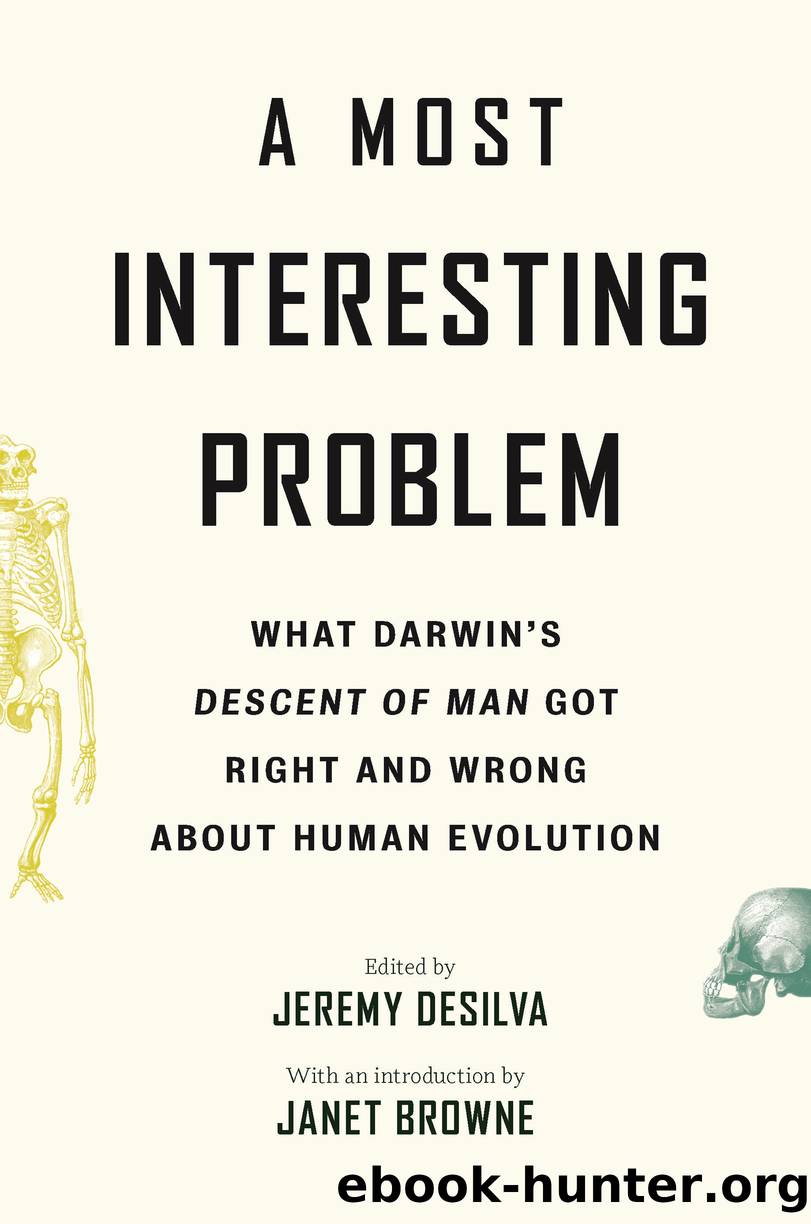A Most Interesting Problem by Jeremy DeSilva

Author:Jeremy DeSilva
Language: eng
Format: epub
Publisher: Princeton University Press
Published: 2020-09-02T00:00:00+00:00
Primate Relationships Today
More than 500 species of living primates, belonging to more than eighty genera, are known to science today. Both these numbers have recently been increasing. Geneticists and field biologists continue to refine their knowledge of the diversity of natural populations in many parts of the world, identifying species that remained unrecognized in the past. Natural geographic ranges of primates include parts of Africa, Asia, Europe, and North and South America, as well as island Southeast Asia, Japan, Taiwan, and Madagascar. Evidence of relationships from DNA has helped to establish the pattern of branching as well as the approximate times that different groups diverged from one another.10 Fossil evidence has added to this picture, providing a hard record of the first appearances of many primate groups, as well as documenting their arrival in various parts of the world.
The last common ancestors of todayâs primates lived shortly after the beginning of the Paleogene period, some 66 million years ago. Living and fossil primates share many traits that are the legacy of these common ancestors. Binocular vision, grasping hands with opposable thumbs, and broad fingertips with nails instead of claws are shared by primates as diverse as humans and galagos. These traits are adaptations that enabled the common ancestors of all primates to thrive in trees.
Like other mammals, primates emerged from the shadows after the extinction of dinosaurs, rapidly diversifying into a multiplicity of forms. Several families of these early primates evolved during the Paleocene and Eocene, before 35 million years ago, and became extinct in later time periods. Fossils from western North America, China and Southeast Asia, Europe, and North Africa document these early primates. Geneticists can examine their emergence only indirectly, through the DNA similarities of their living descendants. Still, genetic evidence has allowed for estimation of the times when living groups diverged and has overturned many ideas about relationships that were based on fossils and anatomy of living primates.
The two deepest branches of living primates are a good example of the interplay of these areas of evidence. Modern scientists recognize these deepest primate branches as the Strepsirrhini and Haplorhini, the names describing the forms of their noses. The moist-nosed strepsirrhines include lemurs, lorises, and galagos, while the haplorhines are the tarsiers, monkeys, and apes, including humans. During the past thirty years, this deepest split in the tree has become near universally accepted, but earlier scientists had different views about the deepest branches. Nearly all agreed that lemurs and lorises share a common heritage, reflected in traits such as a âtoilet clawâ and a âtooth combâ of closely packed lower incisor teeth, both used in grooming the fur. Scientists also agreed that monkeys, apes, and humans are a natural branch, historically known as âanthropoid primatesâ and today classified as Simiiformes. Paleontologists trace these two groups back to two successful and diverse groups during the Eocene, the lemur-like adapids (Adapidae) and the tarsier-like omomyids (Omomyidae).
This primary division, between strepsirrhine and haplorhine primates, hinges on the placement of tarsiersâsmall nocturnal primates from the Philippines, Sulawesi, and other islands of Southeast Asia.
Download
This site does not store any files on its server. We only index and link to content provided by other sites. Please contact the content providers to delete copyright contents if any and email us, we'll remove relevant links or contents immediately.
The 5 Love Languages: The Secret to Love That Lasts by Gary Chapman(8481)
The Space Between by Michelle L. Teichman(6079)
Assassin’s Fate by Robin Hobb(5228)
Wiseguy by Nicholas Pileggi(4581)
Everything Happens for a Reason by Kate Bowler(4061)
Gerald's Game by Stephen King(3913)
A Simplified Life by Emily Ley(3564)
The Power of Positive Thinking by Norman Vincent Peale(3443)
Pillow Thoughts by Courtney Peppernell(3382)
Resisting Happiness by Matthew Kelly(2881)
Girl, Wash Your Face by Rachel Hollis(2819)
Being Aware of Being Aware by Rupert Spira(2702)
Name Book, The: Over 10,000 Names--Their Meanings, Origins, and Spiritual Significance by Astoria Dorothy(2488)
Real Sex by Lauren F. Winner(2466)
More Language of Letting Go: 366 New Daily Meditations by Melody Beattie(2436)
The Holy Spirit by Billy Graham(2408)
Fast Facts on Defending Your Faith by John Ankerberg & John Weldon(2387)
Victory over the Darkness by Neil T. Anderson(2383)
The Secret Power of Speaking God's Word by Joyce Meyer(2248)
